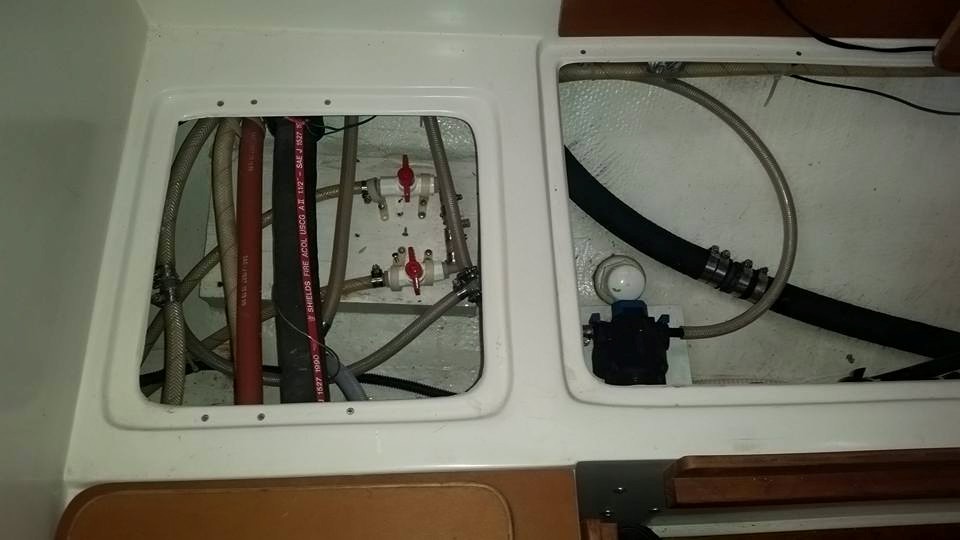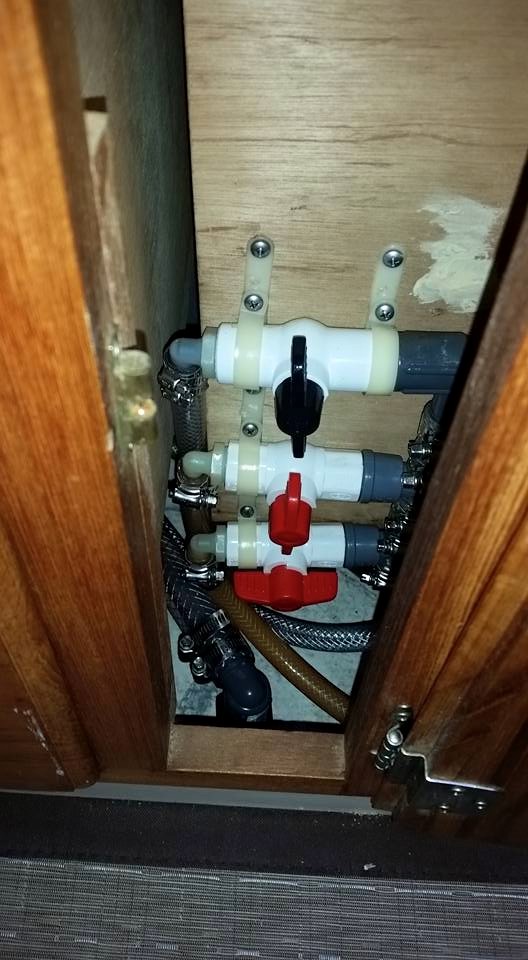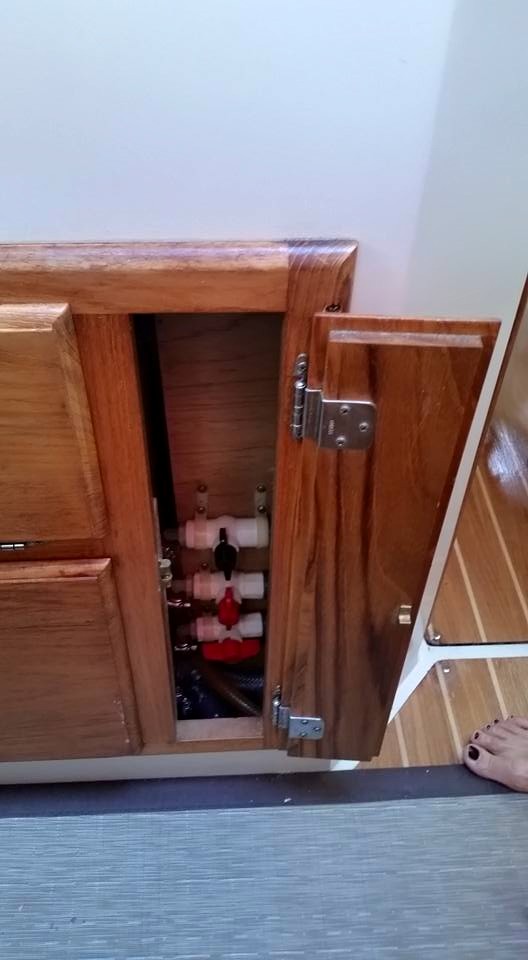Many owners might have made this modification, but as a newbie to the Cat 36 (and to a larger vessel as we had a 26' previously), after reading about switching between fresh water tanks to better monitor usage (and having solved my initial problems with an aged pump) I quickly grew tired of removing the seat cushions to switch between our two aft tanks (no forward tank on this '91). See photo of the original shut-off valves (replaced by me by Home Depot valves).
I decided to put that tall, skinny cupboard door for access to the drain thru-hull under the sink to better use and not only install the tank shut-off valves there, but also to put an unused 3/4" thru-hull fitting to use that is positioned beside the pump inboard of the 2" thru-hull for the black water discharge (also unused on our Great Lakes vessel). When we're cruising and away from a fresh water source I wanted to be able to switch from using the fresh water tanks to sourcing lake water to wash dishes and shower.
After several Home Depot visits to get 12 feet of reinforced 1/2" hose and all the fittings (sizes) right we now have a black valve for the lake water inlet pipe and red for the two aft tanks (see photos). I've put a standard jar filter on the lake water inlet tube inside the port settee compartment to keep seaweed out, as well as another ball valve cut-off at the thru-hull -- there is a risk of contamination from lake water, especially in the hot water tank as it holds 6 gallons, but I'm willing to live with it.
Yes, there will be some lake water in the hoses and water heater after using this source (AND if we're foolish enough to NOT shut off the valves for the fresh water tanks before opening the lake water valve), but nothing that a bit of water running won't flush out (well OK, it will require 6 gallons of hot water running if we've opened the hot water taps at all...). I debated adding a shut-off for the water heater inlet hose to better isolate it from the cold supply, but then doing so would negate the convenience of having lake water to use for showering and dish washing. Critiques are welcome, however! (Not sure if the water pump pressure is sufficient to add in a high-quality water filter that would remove risk of e coli contamination...)
NOTES:
- The previous owner had disconnected, but not removed, the foot pump for the icebox/fridge and had removed the drainage hose to the galley sink outlet hose. The leakage from fridge condensation and spills out of the discharge tube into the space under the box under the stove had created a bad black mould mess. I cleaned up with bleach spray and fresh water, then installed a 6 foot 3/4" hose to the bilge and removed the foot pump.
- The lake water inlet valve had to be below the water line to prevent air locks, but could be positioned higher than the tank valves as they had to be below the level of the outlet fittings at the bottom of the 2 tanks.
- The bottom of the center tank is lower than the smaller starboard tank, so its valve had to be lower than the one for the starboard tank.
- If (when) I install a third fresh water tank under the V-berth the shut-off valve for it can be positioned above the lake water valve as the outlet port fitting will be higher than the other water sources.
HUGE convenience advantage to having the valves inside that access cubby instead of under the port side seat cushions!
Kevin Lenard
"Firefly"
'91 C-36 Mk. "1.5" Tall Rig, Fin Keel, Hull #1120, Universal M-35 original (not "A" or "B")
CBYC, Scarborough, Lake Ontario, Canada





Made a similar change for the three water tanks on our C36 a few years back. Moved the original valves, just bought more hose. The original location was hard to get at, under cushions and AC duct work. Very easy now, to switch tanks when washing dishes.
Nile Schneider
Mañana C36 #1798
Lake Champlain, VT
I have a Catalina 375. Does anyone know how to switch water tanks?